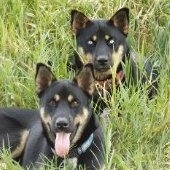Bamboo Variety Guadua Angustifolia
-
Recently Browsing 0 members
- No registered users viewing this page.
Announcements
-
Topics
-
-
Popular Contributors
-
-
Latest posts...
-
30
Tourism Safety Fears Drop Chinese Tourism to Thai Hotels by 30%
Great news then. No more dodging them s*****g and spitting everywhere and fighting like locusts at a barbecue. 😡 -
8
Thai - Cambodia Conflict Cambodian Social Media Calls for Thai Product Boycott
For reference: The Cambodia–Japan Cooperation Centre (CJCC) in Phnom Penh will hold a two-day job fair on August 22 and 23, offering 1,500 opportunities to Cambodian students and workers returning from Thailand. https://www.khmertimeskh.com/category/national/ Google - Cambodia is actively providing job opportunities for its citizens returning from Thailand, with nearly 200,000 positions available across the country. These positions span various sectors and provinces, aiming to facilitate a smooth reintegration of returning workers into the Cambodian workforce. The job distribution across provinces reflects a diverse array of opportunities. Some of the highest numbers of job openings include: – Kampong Speu Province: 45,931 – Phnom Penh: 42,478 – Svay Rieng: 21,925 – Kandal: 14,978 – Kampong Chhnang: 13,030 – Takeo: 11,758 https://construction-property.com/cambodia-offers-nearly-200000-job-opportunities-for-workers-returning-from-thailand/ -
46
Report Thailand Shuts 1,000 Cannabis Shops in Sweeping Crackdown
Well, my latest info was that Opium grows out of the soil too. Took down the Chinese empire... -
37
Crime Thai Teens Arrested for Setting Disabled Dog on Fire
All humans are omnivores. -
8
Has anyone had this happen?
I wouldn't dismiss the possibility that they were counterfeit Sylvanias. Occasionally, just for giggles, I look for spelling errors on the packaging. And I've walked past open shop doors on the street watching Thai workers repackage generic products into name brand packaging. Not too uncommon in Asia. Especially if the price seems too good. -
46
Report Thailand Shuts 1,000 Cannabis Shops in Sweeping Crackdown
It doesn't dry out?
-
-
Popular in The Pub










Recommended Posts
Create an account or sign in to comment
You need to be a member in order to leave a comment
Create an account
Sign up for a new account in our community. It's easy!
Register a new accountSign in
Already have an account? Sign in here.
Sign In Now